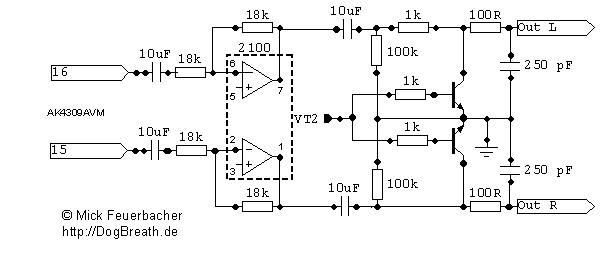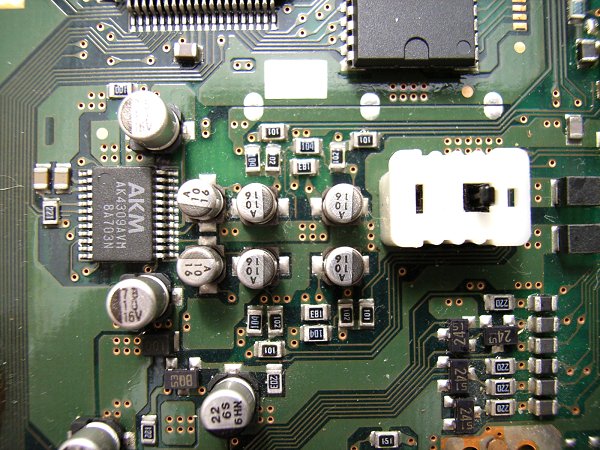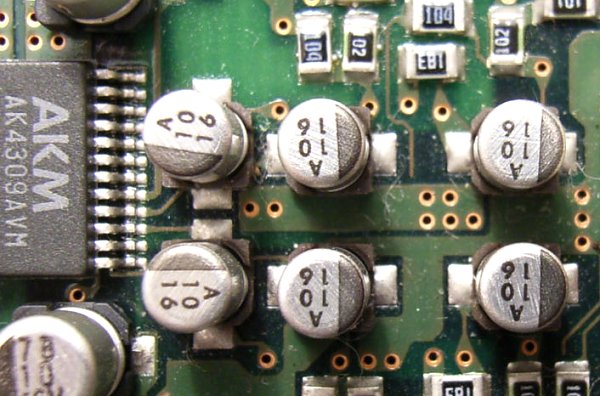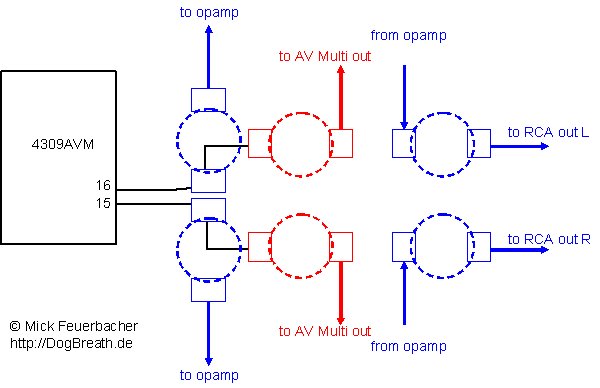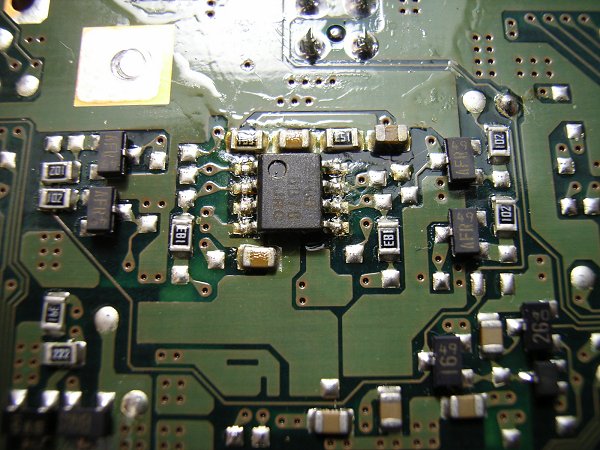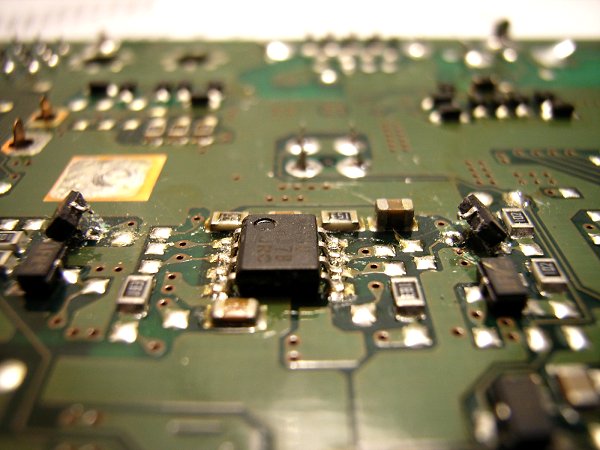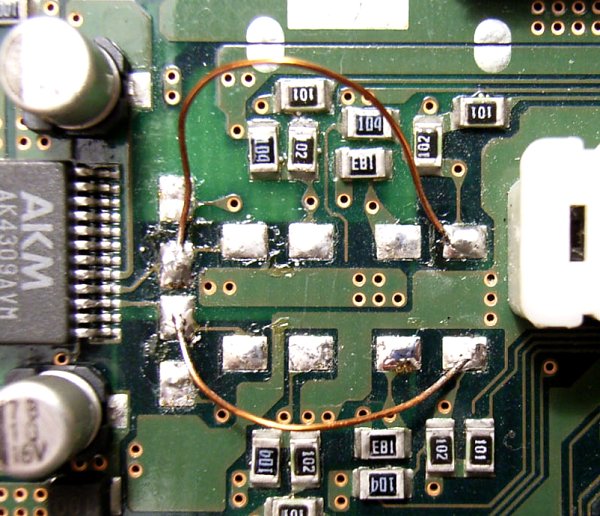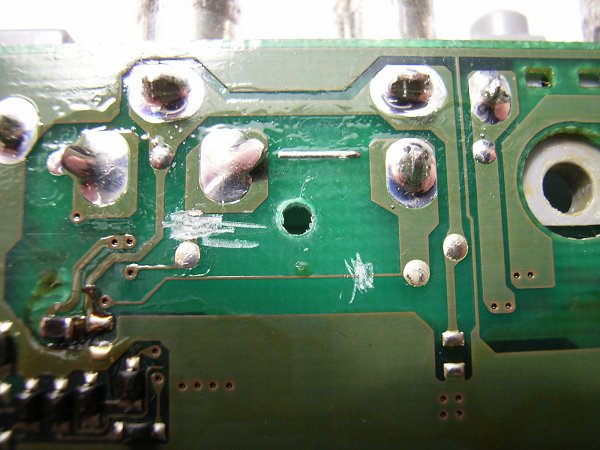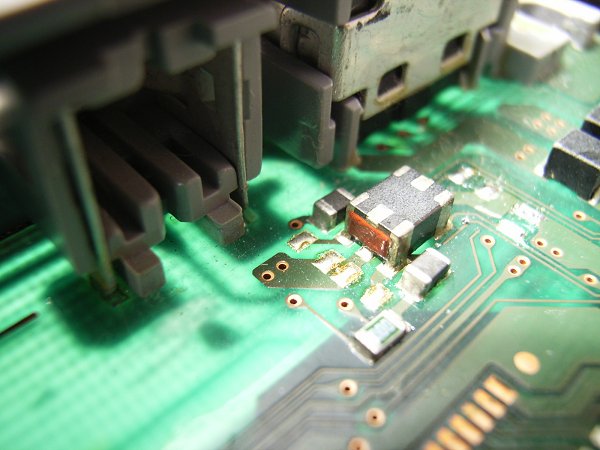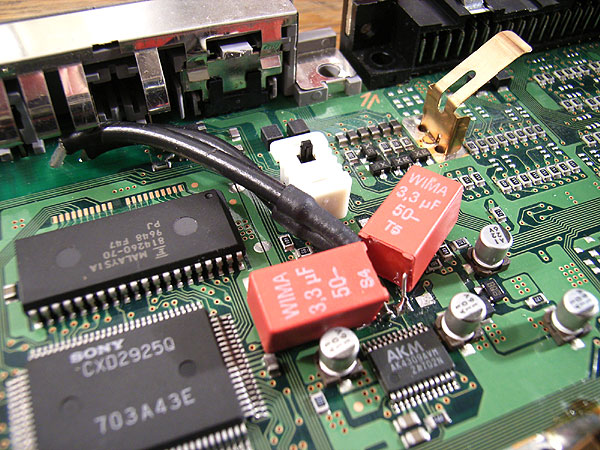|
Of course you can use other values for the DC blockers and the ground
resistors. Just make sure that the corner frequency of this high-pass
filter is well below the audio band, in order to avoid cutoffs in the
bass. The corner frequency (-3 dB point) is calculated according to f
= 1/(2 x Pi x R x C), where R and C are the values of the ground resistor
and DC blocker cap, respectively. The values used here yield a f=2.2 Hz.
Note that you have to take the input impedance of the following stage,
i.e. your preamp, into account. The corresponding resistors are in parallel,
i.e. their values add as R = R1*R2/(R1+R2), where R is the total resistance,
and R1 and R2 are the ground resistor of the output stage (22k in this
example) and the input resistor of the following stage, respectively.
In my setup, for example, I connect the PS1 to a 22 k input impedance
of the following stage, which then leads to a total impedance of 11k and
a cutoff frequency of 4.4 Hz.
|
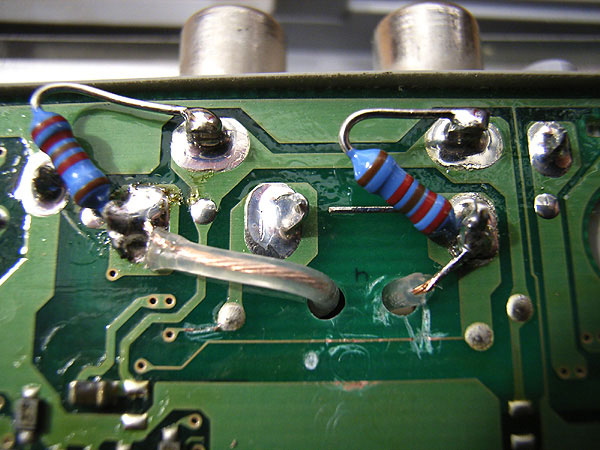 |

